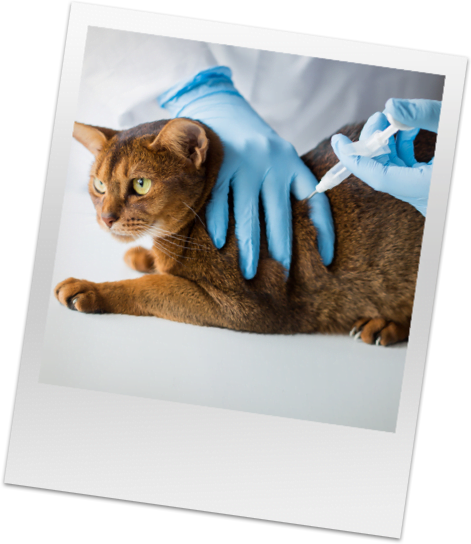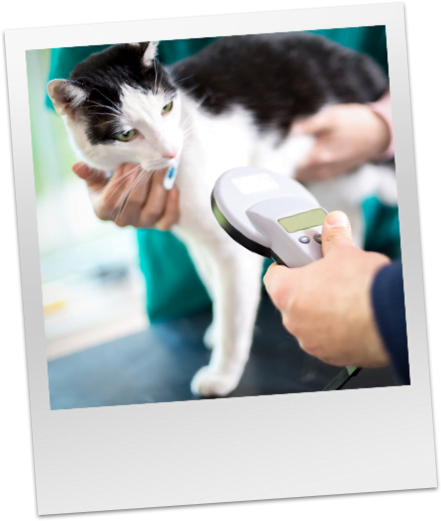Did you know a staggering number of cats end up in shelters each year because they lack identification? No one wants to imagine the heartache of losing a pet. That’s why it’s very important to have your cat microchipped. Read on to learn more about the benefits of microchipping cats.
Microchips are tiny computerized chips that are the size of a grain of rice. A veterinarian can insert a microchip by injection with a needle into your cat’s skin, just like a vaccine. There’s no pain involved, and it takes very little time.
Cats are curious creatures that sometimes roam a little too far from home. Even indoor cats can escape outside now and then. Microchipping your cat is the best way to ensure that if your cat gets lost, you’ll be reunited. Plus, it proves that you’re the owner of your pet, in case there’s ever a dispute.
Once your cat is found and taken to a vet, shelter or fire station, someone will scan your cat for a microchip. If the cat does have a microchip, a unique serial number that is associated with your contact information will appear on the scanning device. But, this will only appear if you registered your cat’s microchip with your information. Therefore, it’s very important to register the microchip!
If your cat is found by someone who takes him or her to a shelter or the vet and no microchip is present, the best-case scenario is your cat will be put up for adoption or surrendered to the person who found them. The worst-case scenario is your cat could be euthanized if it’s not a no-kill shelter.
If your cat is found by someone who takes him or her to a shelter or the vet and no microchip is present, the best-case scenario is your cat will be put up for adoption or surrendered to the person who found them. The worst-case scenario is your cat could be euthanized depending on the shelter’s policies if they’re already overcrowded with homeless animals.
When comparing microchipping cats pros and cons, the benefits far outweigh the cons. Schedule an appointment with your veterinarian to have your cat microchipped. If you’re located in Greater Cincinnati or Dayton, you can also find a clinic that provides microchipping.


Microchips are tiny computerized chips that are the size of a grain of rice. A veterinarian can insert a microchip by injection with a needle into your cat’s skin, just like a vaccine. There’s no pain involved, and it takes very little time.
Cats are curious creatures that sometimes roam a little too far from home. Even indoor cats can escape outside now and then. Microchipping your cat is the best way to ensure that if your cat gets lost, you’ll be reunited. Plus, it proves that you’re the owner of your pet, in case there’s ever a dispute.
Once your cat is found and taken to a vet, shelter or fire station, someone will scan your cat for a microchip. If the cat does have a microchip, a unique serial number that is associated with your contact information will appear on the scanning device. But, this will only appear if you registered your cat’s microchip with your information. Therefore, it’s very important to register the microchip!
If your cat is found by someone who takes him or her to a shelter or the vet and no microchip is present, the best-case scenario is your cat will be put up for adoption or surrendered to the person who found them. The worst-case scenario is your cat could be euthanized if it’s not a no-kill shelter.
If your cat is found by someone who takes him or her to a shelter or the vet and no microchip is present, the best-case scenario is your cat will be put up for adoption or surrendered to the person who found them. The worst-case scenario is your cat could be euthanized depending on the shelter’s policies if they’re already overcrowded with homeless animals.
When comparing microchipping cats pros and cons, the benefits far outweigh the cons. Schedule an appointment with your veterinarian to have your cat microchipped. If you’re located in Greater Cincinnati or Dayton, you can also find a clinic that provides microchipping.

